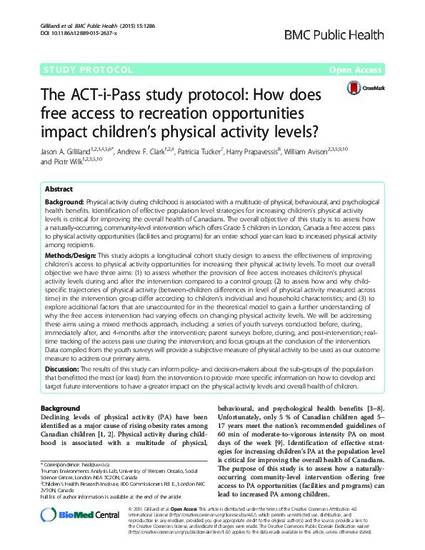
Background: Physical activity during childhood is associated with a multitude of physical, behavioural, and psychological health benefits. Identification of effective population level strategies for increasing children’s physical activity levels is critical for improving the overall health of Canadians. The overall objective of this study is to assess how a naturally-occurring, community-level intervention which offers Grade 5 children in London, Canada a free access pass to physical activity opportunities (facilities and programs) for an entire school year can lead to increased physical activity among recipients.
Methods/Design: This study adopts a longitudinal cohort study design to assess the effectiveness of improving children’s access to physical activity opportunities for increasing their physical activity levels. To meet our overall objective we have three aims: (1) to assess whether the provision of free access increases children’s physical activity levels during and after the intervention compared to a control group; (2) to assess how and why childspecific trajectories of physical activity (between-children differences in level of physical activity measured across time) in the intervention group differ according to children’s individual and household characteristics; and (3) to explore additional factors that are unaccounted for in the theoretical model to gain a further understanding of why the free access intervention had varying effects on changing physical activity levels. We will be addressing these aims using a mixed methods approach, including: a series of youth surveys conducted before, during, immediately after, and 4-months after the intervention; parent surveys before, during, and post-intervention; realtime tracking of the access pass use during the intervention; and focus groups at the conclusion of the intervention. Data compiled from the youth surveys will provide a subjective measure of physical activity to be used as our outcome measure to address our primary aims.
Discussion: The results of this study can inform policy- and decision-makers about the sub-groups of the population that benefitted the most (or least) from the intervention to provide more specific information on how to develop and target future interventions to have a greater impact on the physical activity levels and overall health of children.

Also available open access in BMC Public Health at: https://doi.org/10.1186/s12889-015-2637-x